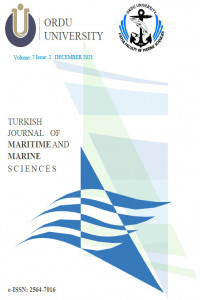Hydrographic study of Shatt Al-Arab estuary in the context of climate change
Hydrographic study of Shatt Al-Arab estuary in the context of climate change
This paper presents key results (at the first time) for the impacts of the North Atlantic Oscillation (NAO), the Indian Ocean Dipole Mode (DMI) and the Southern Pacific Ocean Oscillation (SOI) events on the hydrographic and climatic parameters at the mid of Shatt Al-Arab estuary (i.e. Basrah city centre) by using correlation analysis and standard ordinary linear regression as an autoregressive process of order 1. The analysis examined the discharge, salinity, sea surface water temperature and air temperature over the period 2005-2014 (i.e. interannual, monthly and seasonal datasets). The formal regressions have been estimated by using the first-degree autoregressive AR (1) model, which includes calculations of the GLS-Generalized Least Square Error Minimization regression method, for obtaining more stable solutions in the context of climate change. The correlation is accounted for using the standard ordinary bivariate linear regression method. The main results indicate that the hydrographic and climatic variables in the study the region experienced general trends of decrease in discharge of 2.0936 (m3/sec), increase in salinity of 0.0071 (‰), increase in air temperature of 0.0178 (⁰C) and an increase in sea surface temperature of 0.0098 (⁰C). Significant correlations, as well as prediction equations, were found between discharge and SOI, then, salinity and sea surface temperature with NAO, and finally between air temperature with NAO/DMI/SOI. The Pardé coefficients reflect the Karun influence during spring in the context of climate change.
___
- Abd-El-Mooty M, Kansoh R, Abdulhadi A (2016) Challenges of Water Resources in Iraq. Hydrol Current Res 7: 260. Doi:10.4172/21577587.100026.
- Abdullah A D, Gisen J I A, van de Zaag P, Savenije H H G, Karim U F A, Masih I, Popescu I (2016) Predicting the saltwater intrusion in the Shatt al-Arab estuary using an analytical approach. Hydrol Earth Syst Sci 20: 4031–4042. Doi:10.5194/hess-20-4031-2016.
- Al-Asadi S A R (2017). (2017) The Future of Freshwater in Shatt Al- Arab River (Southern Iraq). Journal of Geography and Geology Vol. 9, No. 2.
- Al-Muhyi A H (2016) The Study of Monthly, Quarterly, and Annual Water Salinity Changes for the river Shatt Al-Arab for the period 2005-2012. Basra Studies Journal 21:39-54.
- Al-Rashidi T B, El-Gamily H I, Amos C L, Rakha K A (2009) Sea surface temperature trends in Kuwait Bay.Arabian Gulf Nat Hazards 50:73–82. DOI 10.1007/s11069-008-9320-9.
- Al Senafi F, Anis A (2015) Shamals and climate variability in the Northern Arabian/Persian Gulf from 1973 to 2012. Int J Climatol 35:4509–4528, (wileyonlinelibrary.com). DOI: 10.1002/joc.4302.
- Attrill M J (2009) Sea temperature change as an indicator of global change In Climate Change. Letcher TM (ed), Elsevier: Amsterdam pp. 337–347.
- Blasing T J (2018) Recent greenhouse gas concentrations. http://cdiac. ornl.gov/pns/current_ghg.html/, 2016 .DOI: 10.3334/CDIAC/atg.032. Accessed 3 August 2018. Bormann H (2010) RUNOFF REGIME CHANGES IN GERMAN RIVERS DUE TO CLIMATE CHANG. ERDKUNDE 64(3): 257-279. DOI: 10.3112/erdkunde.2010.03.04.
- CRU Climate Research Unit (2018) SOI Index Data. https://crudata.uea.ac.uk/cru/data/soi/soi.dat/. Accessed 11 July 2018.
- CRU Climate Research Unit (2018) Jones’s NAO Index Data. https://crudata.uea.ac.uk/cru/data/nao/nao.dat/2018. Accessed 11 July 2018.
- Cullen H M, deMENOCAL P B (2000) North Atlantic Influence on Tigris- historical discharge (ad 622–1470) and climatic implications. Geophysical Research Letters 25(16):3193–3196.
- Emery W J, Thomson R E (2001) Data Analysis Methods in Physical Oceanography. Elsevier, San Diego, USA.
- Giannini A, Kushnir Y, Cane M (2001) Seasonality in the impact of ENS0 and the North Atlantic High on Caribbean rainfall. Phys Chem Earth 26(2):143–147. Doi:10.1016/S1464-1909(00)00231-8 Jones P D, Jónsson T, Wheeler D (1997) Extension to the North Atlantic Oscillation using early instrumental pressure observations from Gibraltar and South-West Iceland. Int. J. Climatol. 17:1433-1450.Doi: 10.1002/(SICI)1097-0088(19971115)17:13<1433::AID-JOC203>3.0.CO;2-P.
- Jones P D (2003) Global change: surface temperature trends. In Encyclopedia of Atmospheric SciencesHolton JR (ed). Academic Press: Oxford, UK, pp. 898–910.
- Mahmood A B (2016) The Interrelation Between the North Atlantic Oscillation (NAO) and Regulated River Discharge at the Baltic Sea Drainage Basin as well as Mean Sea Level at the Baltic Sea-North Sea Region. Ph.D. dissertation, University of Szczecin, Szczecin, Poland.
- MSC-Marine Science Center (2016) Monthly data measurements. Tech. Rep. (Iraq), Univ. of Basrah, 77 pp.
- Naidu C, Satyanarayana G, Durgalakshmi K, Malleswara Rao L, Jeevana Mounika G, Raju A D (2012) Changes in the frequencies of northeast monsoon rainy days in the global warming.Glob. Planet. Change pp. 92–93: 40–47.
- Ropelewski C F, Jones P D (1987) An extension of the Tahiti-Darwin Southern Oscillation Index. Monthly Weather Review 115: 2161-2165.
- Saji N H, Goswami B N, Vinayachandran P N, Yamagata T (1999) A dipole mode in the tropical Indian Ocean. Nature 401(6751): 360–363.
- Saji N H, Yamagata T (2003) Possible impacts of Indian Ocean Dipole mode events on global climateCLIMATE RES, 25: 151-169. https://www.esrl.noaa.gov/psd/gcos_wgsp/Timeseries/Data/dmi.long.data
- Başlangıç: 2015
- Yayıncı: ORDU ÜNİVERSİTESİ > FATSA DENİZ BİLİMLERİ FAKÜLTESİ
Sayıdaki Diğer Makaleler
Hydrographic study of Shatt Al-Arab estuary in the context of climate change
Güllük Körfezi’nde (Ege Denizi) Lesepsiyen Hemiramphus far (Hemiramphidae)’ın Bulunuşu
Batı Karadeniz’de (Sinop İli) Endüstriyel Balıkçılıkta Kullanılan Ağlar ve Teknik Özellikleri
Yakup Erdem, Süleyman Özdemir, Uğur ÖZSANDIKÇI, Ferhat BÜYÜKDEVECİ
Navlun Oranlarının Korsan Saldırılarına Etkisi
Kadir Emrah ERGİNER, Abdullah AÇIK, Özgür YILDIZ
Konteyner Taşımacılığında Nakliye Müteahhitlerinin Hat Seçim Kriterlerinin Değerlendirilmesi
